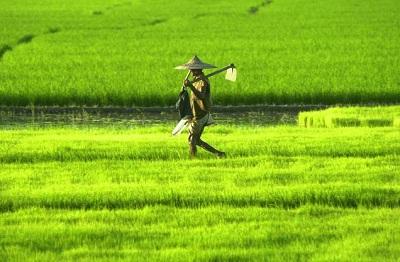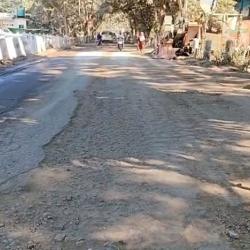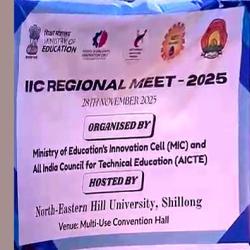Agriculture is one of the earliest vocations for livelihood. Through ages, agriculture has gone through many changes and improvements. However, the transfer and adoption of advancements in agriculture and allied sectors in our region is far below National average. It is also important to note that agriculture and allied sectors employ major share of population (60% of India’s rural population in 2013-14) and therefore its modernization is the best possible way for sustainable socio-economic upliftment and also to create mass employment opportunities. Today, agriculture is no more confined just to farm activities but has become an enterprise requiring lot of educated manpower for production, processing, packaging and marketing. Custom hiring of improved agricultural implements and machineries could also be lucrative employment avenues for educated as well as uneducated youths.
The agricultural scenario in post independent India was grim, affected by droughts, floods and famines. However, after Green Revolution during 1970s the situation has improved considerably and today India is a self reliant country on food grains. In 1950 agriculture sector contributed 55% of the country’s GDP which has come down to 13.9% of the country’s GDP in 2013-14 employing around 60% of India’s rural population. This clearly indicates improvement in general economy of the country, while lesser improvement in agriculture sector. Poverty of the rural population varies from one state to another. While in many states poverty rates are considerably high, it is low in states such as Punjab and Haryana, which have a high proportion (about 80%) of their area under improved agricultural practices.
Agricultural mechanization implies use of various implements and machines in agriculture. Intensification of mechanization is one of the most important factor for increasing agricultural activities and production as well. Productivity of farms depends greatly on the availability and judicious use of farm power. Agricultural implements and machines enable farmers to employ the power judiciously for production purposes. Agricultural machines increase productivity of land and labour by meeting timeliness in farm operations. Mechanization has the advantages of proper utilization of resources, reducing drudgery in farm operations, timely execution of various agricultural operations and best use of the available soil moisture, switching over from animate power to mechanical and electrical power for enhanced power availability for various farm operations, reduce cost of operation, and crop diversification.
Agricultural operations at various stages require farm power for operating different types of farm equipment and for stationary jobs like operating irrigation equipment, threshers/shellers/cleaners/graders and other post harvest equipment. In 1951, the average farm power availability in India was 0.25 kW/ha which increased to about 1.35 kW/ha in 2001. Fifty years earlier, in 1951, about 97.4% farm power was coming from animate sources, in 2001 the contribution of animate sources of power reduced to about 18% and that of mechanical and electrical sources of power increased from 2.6% in 1951 to about 82% in 2001. Over the years, the shift has been towards the use of mechanical and electrical sources of power. At a time when farm power availability of Punjab has reached to over 3.5 kW/ha in 2001, it is still less than 0.90 kW/ha in many states including Assam. Food grain productivity in Punjab was 4032 Kg/ha while in Assam it was 1443 Kg/ha (Table1). Agricultural productivity has shown a linear relationship with farm power availability, i.e. productivity is more in states where more farm power is available.
Table1: Farm Power Availability and Average Productivity of Food Grains in India in 2001.
|
Sl No. |
State |
Farm power availability (kW/ha) |
Food grain productivity (Kg/ha) |
|
1 |
Punjab |
3.5 |
4032 |
|
2 |
Haryana |
2.25 |
3088 |
|
3 |
Uttar Pradesh |
1.75 |
2105 |
|
4 |
Andhra Pradesh |
1.6 |
1995 |
|
5 |
Uttaranchal |
1.6 |
1712 |
|
6 |
West Bengal |
1.25 |
2217 |
|
7 |
Tamilnadu |
0.9 |
2262 |
|
8 |
Karnataka |
0.9 |
1406 |
|
9 |
Kerala |
0.8 |
2162 |
|
10 |
Assam |
0.8 |
1443 |
|
11 |
Bihar |
0.8 |
1622 |
|
12 |
Gujarat |
0.8 |
1169 |
|
13 |
Madhya Pradesh |
0.8 |
907 |
|
14 |
Himachal Pradesh |
0.7 |
1500 |
|
15 |
Maharashtra |
0.7 |
757 |
|
16 |
Rajasthan |
0.65 |
884 |
|
17 |
Jharkhand |
0.6 |
1095 |
|
18 |
Jammu & Kashmir |
0.6 |
1050 |
|
19 |
Orissa |
0.6 |
799 |
|
20 |
Chhattisgarh |
0.6 |
799 |
|
|
All India |
1.35 |
1723 |
Scope of farm mechanization
1) Farm mechanization helps in timely completion of various farm operations. This leads to proper utilization of soil moisture for multiple cropping. Multiple cropping will increase annual agricultural production from a particular piece of land.
2) Most of the agricultural operations are labour intensive, which retards many peoples from agriculture. Farm mechanization reduces drudgery of peoples thereby drawing more peoples back to agriculture.
3) Higher production and productivity of the crops can be expected since various operations are finished in time with the application of machines.
4) Farm mechanization reduces time and expenses of farm operations leading to reduced cost of production. This encourages farmers to expand their farmland in comparison to farmers using animals for farm operations. The farmers can compete better in the market with reduced cost of production.
5) Mechanized farming encourages farmers for crop diversification (to expand to new crops) since there is higher capital investment with the machineries and more time in hand.
6) Custom hiring of various agricultural machines and implements could be a new livelihood for unemployed youths.
7) Production, repair and maintenance of machines, implements and spare parts can also employ large number of educated youths. This will require skill upgradation of the educated youths in various vocations and leads to a more self reliant society.
8) Farm mechanization enlarges the employment opportunities both on-farms and non-farm sectors through increase in area under plough, multiple cropping, development of agro-industries and related services.
Constraints of farm mechanization
1) North Eastern region of India is characterized by fragmented land holding and small farm sizes. This restricts economic use of large sized farm machineries.
2) Farm lands are sloppy to various extents in the hilly states and even in Assam. This also restricts easy maneuvering and operation of big and heavy machineries. This necessitates smaller and lighter machineries for use in sloppy land.
3) Though numerous farm implements are being developed by research institutes and private organizations these are not readily available in the North Eastern Region. This is a major constraint in promotion and adoption of mechanization.
4) Very few farm machineries are available in urban areas of the region. However, the rural areas are still remaining out of sale and service network still now.
5) Transfer and adoption of new technologies is very slow in the North Eastern Region. The same is applicable in case of awareness on farm mechanization also. Till today, our knowhow on mechanization is restricted to Tractor, Power Tiller, Rotavator and Power Pump only.
6) Majority of small farmers are poor who are not in a position to purchase the costly machinery like tractors, combine harvesters etc.
Policy of Govt. of India
As of now, there is no separate National Policy on Agricultural Mechanization. This is covered under Agricultural Policy. The Government of India promotes agricultural mechanization in the following directions:-
1) Agricultural mechanization should contribute to sustainable increase in yields and cropping intensity so that the planned growth rates in agricultural production are achieved and maintained.
2) The income of agricultural workers (cultivators and labourers) should increase at a satisfactory rate so that the disparity between urban and rural incomes is contained, and the agricultural worker given his rightful opportunity to lead a dignified life.
3) The benefits of agricultural mechanization should be extended to all categories of farmers with due consideration to small and marginal ones and to all regions of the country especially the rainfed areas.
4) Agricultural mechanization should make the environment worker friendly especially for the women workers by reducing drudgery and health hazards and by improving safety in production operations.
5) Agricultural mechanization should contribute to conservation of land and water resources and to more efficient use of inputs like seed, chemicals, fertilizers and energy.
6) Agricultural produce loss, both in quality and quantity, should be reduced through timely operations and improvement in process and techniques.
7) Agricultural mechanization should lead to reduced costs of production of different commodities, to increase income of farmers and to impart a price advantage to Indian agriculture for competing in the international market.
The way ahead
Farm mechanization is essential for improving agricultural production and productivity. The problems as discussed earlier may be converted to opportunities for better resource use, regional self reliance and generating sustainable employment in the following ways-
1) Creating awareness on farm mechanization for promotion at all levels will help land owners, farmers, farm labourers and youths.
2) Development of professionally skilled manpower in rural areas to cater operation, maintainance and service of various farm machineries. Govt. of India has set up an institute named “North Eastern Region Farm Machinery Training and Testing institute” (NERFMTTI) at Biswanath Chariali, Dist. Sonitpur, Assam, for providing practical training to farmers, machinery owners, mechanics and educated youths on short and long term basis.
3) Use of Tractor and Power Tiller are limited simply to land preparation and tillage in this region. However, these may be used as source of power to numerous implements for various farm operations including land preparation, seed sowing, transplanting, plant protection, irrigation, intercropping, harvesting, post harvest etc. Non availability of these implements have hindered use of the Tractor and Power Tiller, and thereby reducing income generation of the owners. Tractor and Power Tiller dealers may keep stock of some of these implements after assessing location specific requirements on crop basis. There is opportunity for youths also to open up implements stores.
4) Non availability of other implements and machineries may also be met through machinery and implements stores, which may not only supply the implements but also provide basic knowhow about improved machineries.
5) Indian Council of Agricultural Research (ICAR) is working on reducing size and weight of large sized machines for ease of use in fragmented land holding and sloppy land. Small tractors and light weight Power Tillers are already available in market.
6) There is need to establish Custom Hiring Centers and Farm Machinery Banks which can help poor farmers to avail facilities of improved implements without purchasing. These centers can serve as resource centers for popularization and facilitation of various farm machineries and implements. This can also be employment opportunity for skilled youths.
Mechanization is an essential component of modern agriculture which is not realized to a large extent in the North Eastern region. It should be considered as a very important component of development at grass root level by planners, administrators, civil society organizations, land owners, farmers and youths. Setting up production units of various farm machineries and implements, their distribution and service network will help in popularization of the technologies, which will require large number of skilled personnel. Cost of various farm operations will also be lower than earlier which will lead to lesser cost of production. It will help farmers to compete better in the market and so that outflow of money due to import of food grains from outside the region will be reduced. Therefore, farm mechanization should be encouraged for more crop coverage, higher productivity, higher GDP, and employment of skilled manpower leading to richer, self reliant, skilled society with high employment potential.
- 18128 reads









Add new comment